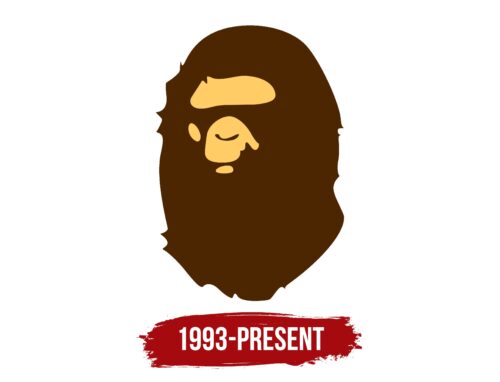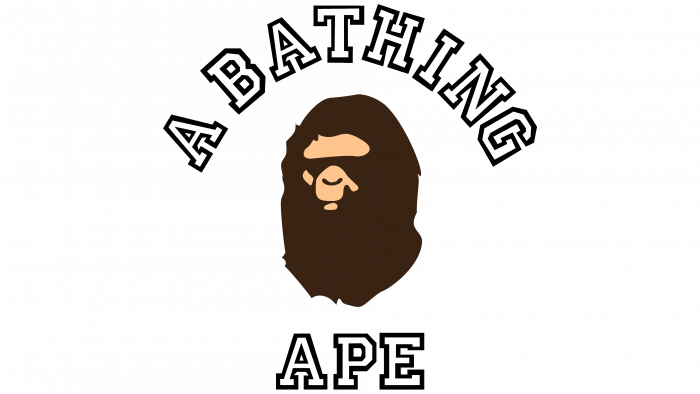The BAPE logo communicates that the company’s products are ideal for the jungle of the intricate streets of a big city. The brand’s stylish items do not hinder movement and allow you to stand out. The emblem conveys the spirit of freedom and animal nature.
BAPE: Brand overview
| Founded: | 1993 |
| Founder: | Nigo |
| Headquarters: | Tokyo, Japan |
| Website: | bape.com |
BAPE (or A Bathing Ape) is a Japanese urban-style clothing brand that emerged in 1993 in Ura-Harajuku. Its head office is located in Tokyo. The brand’s founder is Tomoaki Nagao (stage name Nigo), a DJ, designer, and entrepreneur. The fashion company owns 19 retail outlets, including overseas – in major cities such as Los Angeles, Miami, Paris, London, New York, Seoul, Shanghai, Beijing, etc. The Kyoto store also contains a gallery and serves as a venue for shows, meetings, and other events. In 2011, the company moved to the fashion conglomerate IT Group. After the sale, the founder worked as a creative director for two years and left it in 2013.
Nigo decided to open his store, inspired by the ideas of Hiroshi Fujiwara, a fashion guru. He was also more influenced by his parents, who worked hard and left him alone with toys from which he drew fashionable styles. After graduating from college, Tomoaki Nagao joined Popeye magazine, where he served as an editor. He then borrowed 4 million yen from a businessman he knew and, together with Jun Takahashi, opened a Nowhere store. Then, the aspiring entrepreneur decided to found his brand.
Meaning and History
The store’s name, Nigo, is trendy, which is clear to everyone in Japan. It was related to the 1968 film Planet of the Apes image. After thinking it over, the founder decided to beat him and associate him with Japanese culture. The fact is that BAPE stands for A Bathing Ape in Lukewarm Water because it is composed of the letters of the first two words. The Japanese usually take baths daily in warm water (above +40 degrees), and some enjoy bathing until it cools down. Thus, the phrase ironically means a rich man who loves to pamper himself. This was the originally intended contingent of buyers.
The owner of the trademark was actively engaged in its promotion. To this end, Nigo gave half of the products out of each sewn batch to friends weekly so they could wear and popularize his clothes. Performer Keigo Oyamada became one of the “objects of walking advertising.” Then, the store owner got carried away with DJ work and recording an album, raising the brand’s prestige. In February 2011, he moved to the Hong Kong-based IT Group, which bought back more than 90 percent of the shares.
What is BAPE?
BAPE is a Japanese fashion brand also known as A Bathing Ape. It was created in 1993 by entrepreneur and DJ Tomoaki Nagao (Nigo), focusing on trendy streetwear. In 2011, he sold the company to Hong Kong fashion giant IT Group. The brand is currently headquartered in Tokyo.
However, the new owner did not change the logo, considering using the already well-promoted image is reasonable since it was printed on all branded products. Moreover, he continued the line of prints based on famous films. One of his most recent collaborations is with Disney (based on the cartoon Ralph Breaks the Internet).
Bapesta Logo
The Bapesta sneaker line belongs to the Japanese streetwear manufacturer A Bathing Ape, which became famous for its original approach to design. The Air Force 1 series inspired the brand, so its emblem contains a check mark similar to the famous Nike symbol. Here, it resembles lightning as it merges with one of the triangular projections of the five-pointed star. By the way, many associate the star with the cult sign of another trademark – Converse-. But the Bapesta logo is tilted to the left and has different lengths of rays, creating a dynamic effect. The attached check mark resembles a speed line – a trace depicting fast movement. The emblem is presented in a black-and-white palette, although it can have any other color on the sneakers.
BAPE: Interesting Facts
A Bathing Ape, also known as BAPE, is a big name in streetwear fashion that started in Japan. Nigo founded it in 1993 in Tokyo. It’s famous for its cool styles and rare items that quickly sell out.
- The Name: “A Bathing Ape” comes from a Japanese saying about living in luxury. It shows the brand’s fun take on fashion, focusing on luxury and excess.
- Shark Hoodie: This hoodie covers your face like a mask and has shark details. It’s very popular and a must-have for streetwear fans.
- Rare Releases: BAPE often releases limited items that are hard to find, making them even more desirable.
- Cool Collaborations: BAPE has worked with big names like Adidas, Coca-Cola, and Kanye West, making it a big deal in fashion and pop culture.
- BAPE STA™ Sneakers: These shoes are known for their star logo and have been released in many colors and styles. They’re a big part of sneaker culture.
- Smart Start: Nigo began BAPE by making only a few of each item, creating buzz and demand. This idea has influenced many other brands.
- More than Fashion: BAPE also has a café and a toy line, showing it’s more than just clothing. It’s a lifestyle brand.
- Worldwide Stores: BAPE has stores in big cities like New York and Paris, bringing its style to a global audience.
- New Ownership: In 2011, Nigo sold most of BAPE to the I.T. Group, but the brand has continued to grow and stay relevant.
- Cultural Impact: BAPE has influenced fashion and culture worldwide. It is known for its quality, unique designs, and importance in streetwear.
From its start as a small Tokyo shop to becoming a global fashion icon, BAPE has shown the power of creative design and smart marketing. It’s a favorite among those who love to stand out in fashion.
Font and Colors
For camouflage, the BAPE logo is popularly called Cloud Camo. It depicts a monkey. She is a collective image of the characters from the film The Planet of the Apes, a hint of humanity and irony over the Japanese phraseological unit about lovers of carefree soaking in warm water. There are no specific facial features – only common spots through which the animal’s head is drawn.
The central part is light – it is painted in a flesh-yellow tint. Sunken places for the eyes, nose, mouth, forehead, and cheek are schematically visible. Everything else is covered with thick, dark brown hair. The monkey has no torso – only the upper part of the bust and the head with the face. It should be noted that the emblem became very popular because it was used as a print on T-shirts from the very beginning.
The brand name has been spelled differently, but the typeface most often resembles the College font. In contrast, the color gamut is stable: it always consisted of two shades of brown – flesh and earthy.
BAPE color codes
| Golden Ochre | Hex color: | #ffcc66 |
|---|---|---|
| RGB: | 255 204 102 | |
| CMYK: | 0 20 60 0 | |
| Pantone: | PMS 135 C |
| Cafe Noir | Hex color: | #4b2601 |
|---|---|---|
| RGB: | 75 38 1 | |
| CMYK: | 0 49 99 71 | |
| Pantone: | PMS 732 C |
FAQ
What does the BAPE logo mean?
The BAPE logo reflects the name of a trendy streetwear brand. The word itself conveys two meanings. First is the popular Japanese expression, a monkey bathing in warm water; that is, it means a person who lives carefree and spoiled by the attention of others. Second, it refers to the company’s founder’s favorite film, Planet of the Apes.
What is the BAPE symbol?
The symbol of BAPE is a serious-looking monkey whose head and torso are almost completely covered with hair. Flesh-colored spots appear through the dark background, forming the animal’s forehead, nose, mouth, and cheek. Around it is the full name of the Japanese brand – “A Bathing” at the top and “Ape” at the bottom. The inscription is large and bold, with large rectangular serifs.
What animal is the BAPE logo?
The animal depicted on the BAPE logo is a monkey (presumably a gorilla). It is both ironic and philosophical at the same time. On the one hand, he points to the carefree younger generation (from the idiom “bathing monkey”). On the other hand, it refers to the smart and developed characters of the film “Planet of the Apes.








